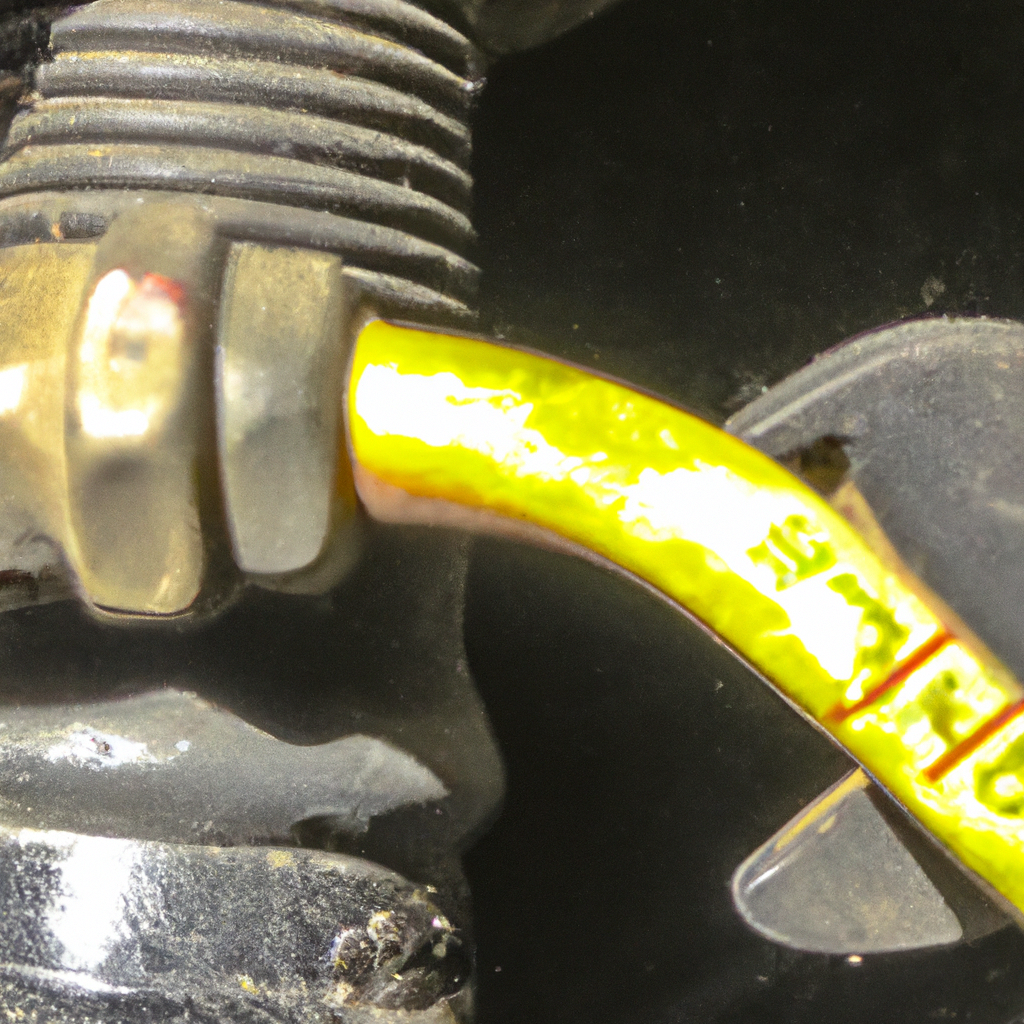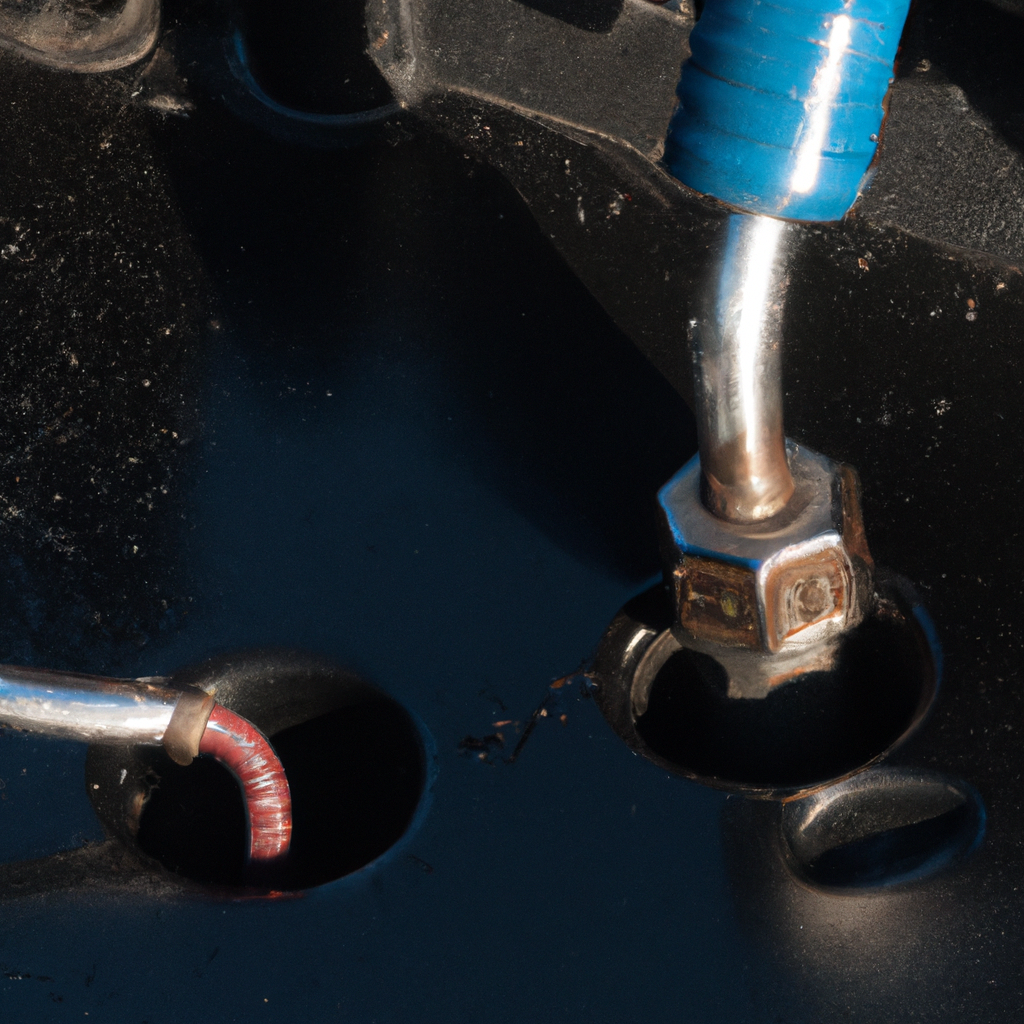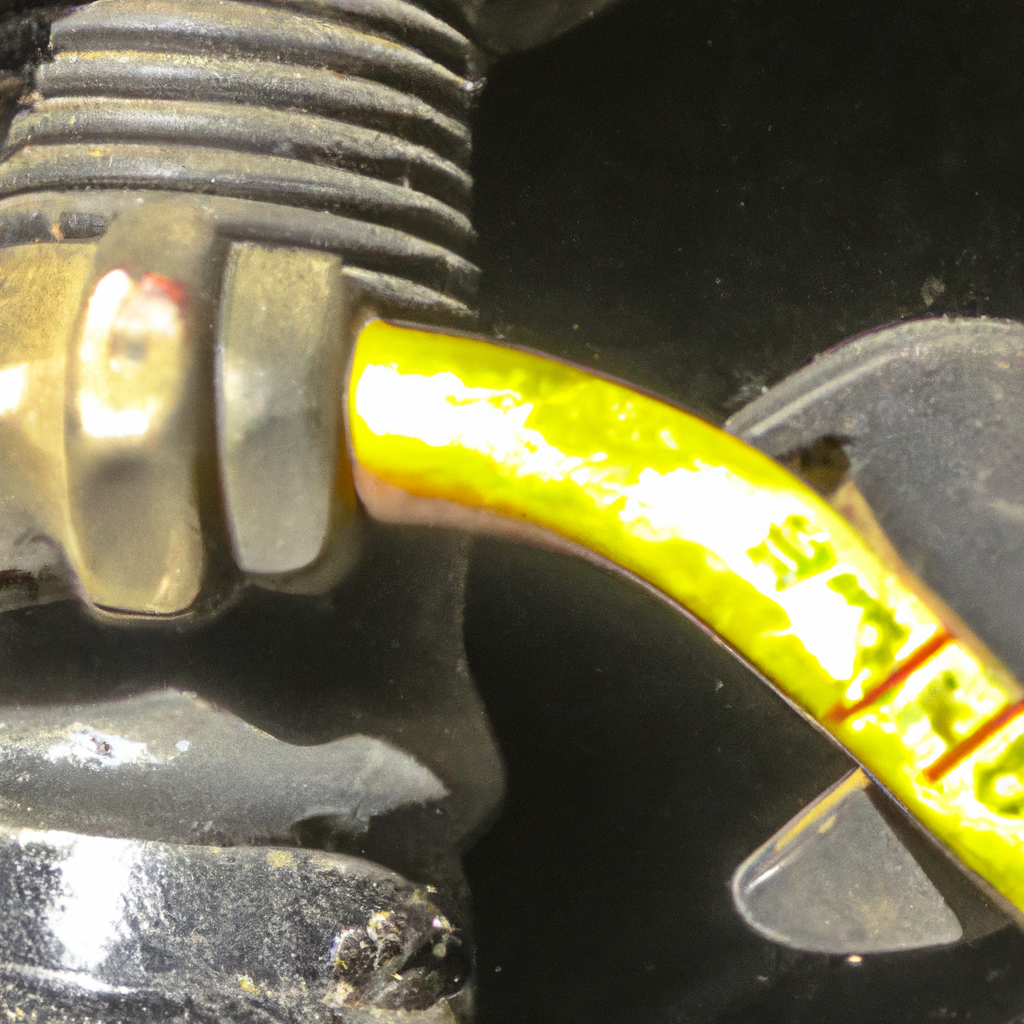Towing a vehicle is a common practice when it comes to transporting heavy loads or bringing a disabled car to a repair shop. However, the potential risks involved in towing, particularly the effect it might have on your transmission, can often be overlooked. In this informative article, we will examine the impact of towing on your transmission and discuss important factors to consider to ensure the longevity and reliability of your vehicle’s vital component. Understanding these concerns will enable you to make informed decisions and take necessary precautions when towing, ultimately preserving the health of your transmission.

What is towing?
Definition of towing
Towing refers to the process of pulling or hauling a vehicle, usually disabled or immobile, using another vehicle. It is a common practice used to transport vehicles that are unable to operate on their own. Towing can be performed using various methods and equipment, depending on the situation and the capabilities of the vehicles involved.
Types of towing
There are several types of towing methods commonly used, depending on the specific needs and circumstances. These include:
-
Flatbed towing: In this method, the disabled vehicle is loaded onto a flatbed trailer or truck, ensuring that all wheels are off the ground. This is often considered the safest and most secure method of towing, as it eliminates any potential damage to the drivetrain or transmission.
-
Wheel lift towing: This method involves lifting the front or rear wheels of the disabled vehicle off the ground using a metal yoke and hydraulic arms. While this method is more commonly used for shorter distances and lighter vehicles, it can still cause stress on the transmission if not done properly.
-
Two-wheel towing: Also known as “dolly towing,” this method utilizes a tow dolly, which is a small trailer with two wheels that supports the front wheels of the towed vehicle. The rear wheels of the towed vehicle remain on the ground. This method can place additional strain on the transmission, especially during turns and maneuvering.
-
Tow bar towing: In this method, the disabled vehicle is connected to the towing vehicle using a rigid tow bar. This means that all four wheels of the towed vehicle remain on the ground. Tow bar towing is commonly used for recreational vehicles (RVs) and motorhomes, but it can potentially exert stress on the transmission if not executed correctly.
Understanding transmission
What is transmission?
The transmission is a vital component of a vehicle’s drivetrain system responsible for transmitting power from the engine to the wheels. It consists of various gears, shafts, and other mechanical components that allow for the appropriate transfer of power and torque to the wheels, enabling the vehicle to move. There are different types of transmissions, such as manual, automatic, continuously variable transmissions (CVTs), and dual-clutch transmissions (DCTs), each with its own mechanisms and functionality.
Components of a transmission
A typical transmission consists of several key components, including:
-
Gear sets: These are the primary components responsible for changing the ratio between the engine speed and the rotational speed of the wheels, allowing the vehicle to accelerate or decelerate.
-
Clutch system: In manual transmissions, the clutch system is used to engage or disengage the engine from the transmission. It allows for smooth gear changes by temporarily interrupting the power flow between the engine and the transmission.
-
Hydraulic system: Automatic transmissions utilize a hydraulic system to manage the engagement and shifting of gears. This system relies on transmission fluid and a complex network of valves, solenoids, and sensors to control the operation of the transmission.
-
Torque converter: Found in automatic transmissions, the torque converter is responsible for transmitting power from the engine to the transmission, allowing for smooth and efficient gear changes.
-
Control module: In modern vehicles, the transmission control module (TCM) or transmission control unit (TCU) oversees the electronic operation and management of the transmission, ensuring optimal performance and efficiency.
Effects of towing on transmission
Towing can have various effects on the transmission of a vehicle. It places additional stress and load on the transmission system, which can lead to accelerated wear and potential damage if not properly managed.
Increased load on transmission
Towing places an increased load on the transmission due to the additional weight being pulled. This added strain can cause the transmission to work harder and operate at higher temperatures, potentially affecting its overall performance and longevity.
Excessive heat buildup
Towing generates additional heat within the transmission due to the increased workload. The heat generated during towing can lead to overheating of the transmission fluid, which may result in fluid degradation and reduced lubrication capabilities.
Fluid breakdown and contamination
The increased load and heat generated during towing can cause the transmission fluid to break down and become less effective in lubricating and cooling the transmission components. Additionally, towing in dusty or dirty environments can lead to fluid contamination, further compromising its performance.
Strain on transmission cooling system
Towing places additional strain on the transmission cooling system as it must work harder to dissipate the increased heat generated. If the cooling system is not able to effectively regulate the transmission temperature, it can lead to overheating and potential damage.
Wear and tear on transmission components
The increased load and stress on the transmission during towing can accelerate the wear and tear of various transmission components, such as gears, bearings, clutch packs, and seals. Over time, this can lead to premature failure and the need for costly repairs or replacements.
Factors influencing the impact of towing
Several factors can influence the impact of towing on a vehicle’s transmission. Understanding and addressing these factors can help mitigate potential damage and ensure the safe operation of both the towing and towed vehicles.
Vehicle weight and towing capacity
The weight of both the towing vehicle and the towed vehicle, along with their respective towing capacities, plays a crucial role in determining the impact of towing on the transmission. It is essential to know the towing capacity of the vehicle to ensure that it can safely handle the additional weight without putting excessive strain on the transmission.
Proper trailer setup
Properly setting up the trailer and ensuring that it is well-balanced and securely attached to the towing vehicle is crucial in minimizing the impact on the transmission. An improperly set up trailer can cause excessive swaying or uneven weight distribution, placing added stress on the transmission.
Driving conditions and terrain
The driving conditions and terrain in which towing takes place can significantly impact the transmission. Towing on steep inclines, rough terrains, or in stop-and-go traffic can cause the transmission to work harder and generate more heat. It is important to consider the driving conditions and adjust driving strategies accordingly.
Maintenance and condition of the transmission
Regular maintenance and ensuring that the transmission is in good condition are essential in minimizing the impact of towing. A well-maintained transmission with clean fluid, properly adjusted components, and no pre-existing issues is more likely to withstand the stresses of towing.

Symptoms of transmission damage from towing
Towing-related damage to the transmission can manifest in various symptoms. It is important to be aware of these signs to address any potential issues before they escalate.
Slipping gears
One of the common symptoms of transmission damage from towing is the slipping of gears. This manifests as a loss of power or a delay in acceleration even when the vehicle’s engine is revving.
Delay in shifting
Towing-induced transmission damage can result in delays in shifting between gears. The transmission may hesitate or take longer to engage the desired gear, leading to a noticeable delay in acceleration or deceleration.
Strange noises
Unusual noises coming from the transmission, such as grinding, whining, or clunking sounds, can indicate potential damage or mechanical issues. These noises should be investigated and addressed promptly to avoid further damage.
Burning smell
If a burning smell, often described as a burnt or overheated odor, is detected while towing or after towing, it may indicate that the transmission is experiencing excessive heat and potential fluid degradation. This should not be ignored and should be addressed promptly.
Fluid leaks
Towing can contribute to the development of fluid leaks in the transmission. If there are visible signs of fluid dripping or pooling underneath the vehicle, it is important to have it inspected and addressed to prevent further damage.
Overheating
An overheating transmission can be a clear indication of towing-related damage. If the transmission temperature gauge is consistently rising beyond normal levels or if warning lights related to transmission overheating are activated, immediate care should be taken to prevent further damage.
Preventing transmission damage during towing
While towing can potentially place stress on a vehicle’s transmission, there are several measures that can be taken to minimize the risk of damage and ensure safe towing operations.
Know your towing capacity
Before towing, it is crucial to know and understand the towing capacity of the vehicle. Exceeding the recommended towing capacity can place excessive strain on the transmission and lead to potential damage.
Use the right equipment
Using the appropriate towing equipment, such as a properly rated hitch, safety chains, and brake controllers, is essential for safe towing. Not using the correct equipment can lead to instability, uneven weight distribution, and increased stress on the transmission.
Distribute weight evenly
Properly distributing the weight of the towed load is crucial in minimizing the impact on the transmission. Ensure that the load is evenly distributed across the trailer and that it is within the weight limits specified by the vehicle manufacturer.
Consider using a transmission cooler
Installing a transmission cooler can help dissipate the excess heat generated during towing, reducing the risk of fluid breakdown and transmission overheating. Transmission coolers provide an additional level of cooling and can be particularly beneficial for vehicles regularly used for towing.
Keep an eye on transmission fluid
Regularly checking the transmission fluid level and condition is important to ensure optimal lubrication and cooling. If the fluid appears discolored, smells burnt, or shows signs of contamination, it should be changed promptly to prevent damage to the transmission.
Be mindful of your driving style
While towing, it is important to adopt driving techniques that minimize stress on the transmission. Avoid abrupt starts and stops, maintain a moderate speed, and employ lower gears when necessary to reduce the load on the transmission and promote smoother operation.
Routine maintenance for a towed vehicle’s transmission
To ensure the longevity and proper functioning of a towed vehicle’s transmission, regular maintenance should be performed. This helps to identify and address any potential issues before they escalate into more significant problems.
Regular fluid checks and changes
Regularly checking the transmission fluid level, color, and quality is essential. If the fluid is found to be low, contaminated, or degraded, it should be changed according to the manufacturer’s recommended intervals. Fresh fluid provides proper lubrication and cooling, reducing the risk of damage.
Transmission filter replacements
Replacing the transmission filter at the recommended intervals is important to maintain a clean and debris-free transmission system. A clogged or dirty filter can restrict fluid flow and lead to decreased performance and potential damage.
Inspection of cooling system
Regularly inspecting the transmission cooling system, including the radiator, transmission cooler, and associated hoses and connectors, is crucial. Any signs of leaks, blockages, or damage should be addressed promptly to prevent overheating and potential transmission damage.
Inspection of transmission mounts
The transmission mounts, which provide support and secure the transmission to the vehicle’s chassis, should be inspected for signs of wear or damage. Worn or damaged mounts can cause excessive transmission movement during towing, leading to increased stress on the transmission.
Professional servicing and diagnoses
Regularly seeking professional servicing and diagnoses from trained technicians who specialize in transmissions is highly recommended. They have the knowledge, expertise, and tools to identify and address any potential issues, ensuring the transmission is properly maintained and functioning optimally.
Repairing transmission damage from towing
If towing-related transmission damage is detected, prompt action should be taken to repair the issue and prevent further damage or failure.
Diagnosing the issue
Diagnosis is the crucial first step in repairing transmission damage. Through a series of tests, inspections, and possibly computerized diagnostics, the source of the damage can be identified, allowing for targeted repairs.
Repairing or replacing damaged components
Once the issue is identified, the damaged components can be repaired or, if necessary, replaced. This may involve replacing worn-out gears, bearings, clutch packs, seals, or other transmission parts that have been affected by towing-related stress.
Flushing and refilling transmission fluid
If the transmission fluid has been contaminated or degraded due to towing, it should be flushed and refilled with fresh, clean fluid. Flushing helps remove any harmful debris or contaminants that may have accumulated, ensuring optimal lubrication and cooling capabilities.
Testing and verifying proper functioning
After repairs have been made and fluid replacement has been completed, the transmission should be thoroughly tested to ensure it is functioning properly. A road test, along with various diagnostic procedures, can help confirm that the repairs have been successful and that the transmission is operating as it should.
Regular monitoring and future prevention
Following the repair of towing-related transmission damage, it is important to regularly monitor the transmission’s performance and address any potential issues as they arise. Additionally, taking preventative measures during future towing operations can greatly reduce the risk of recurring damage.
Conclusion
Towing can have significant effects on a vehicle’s transmission, placing additional stress and load on its components. However, with proper understanding, maintenance, and precautions, the risk of transmission damage can be minimized. Knowing the towing capacity of the vehicle, using the correct equipment, and employing safe driving techniques are essential in preventing potential damage. Regular maintenance, such as fluid checks, filter replacements, and inspections, can help maintain the transmission’s health and longevity. If damage does occur, prompt repairs and professional servicing are necessary to restore the transmission to optimal operation. By following these guidelines, towing can be done safely and efficiently while minimizing the risk of transmission damage.
